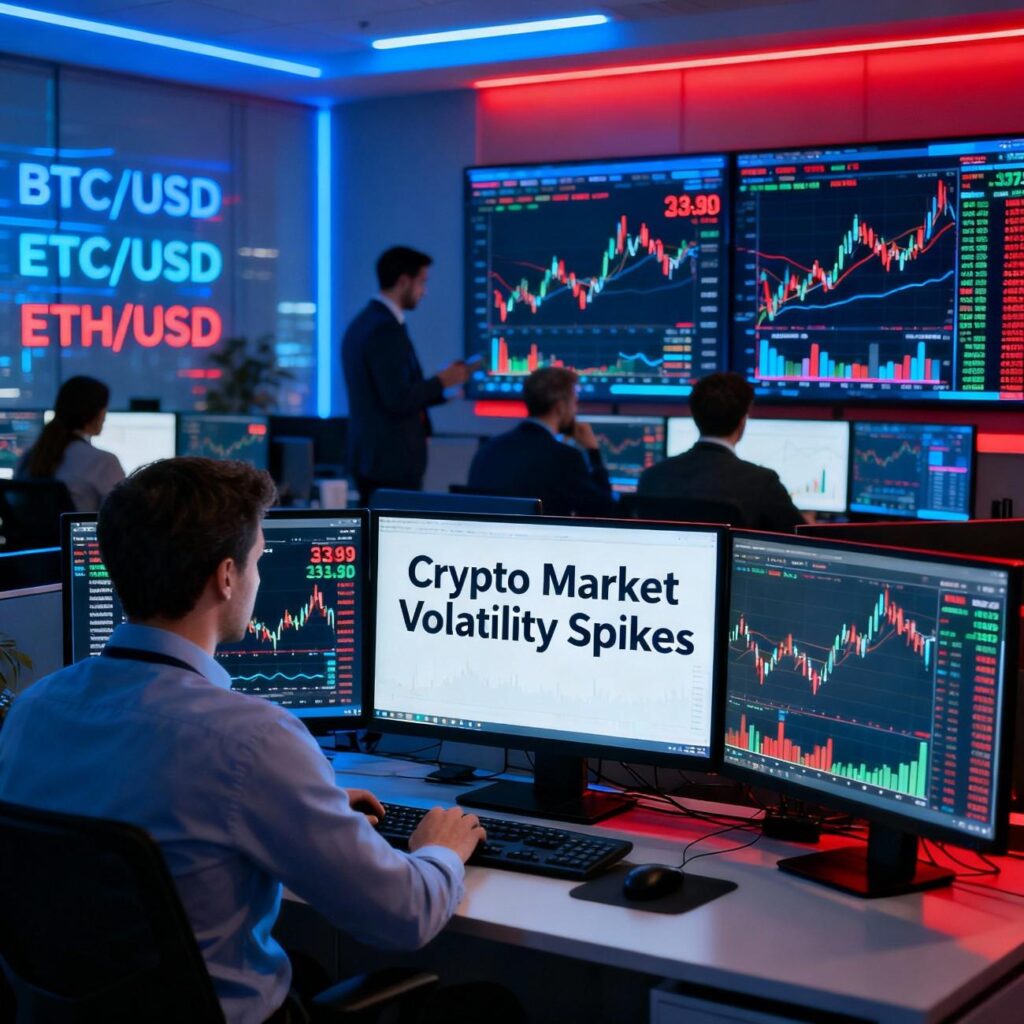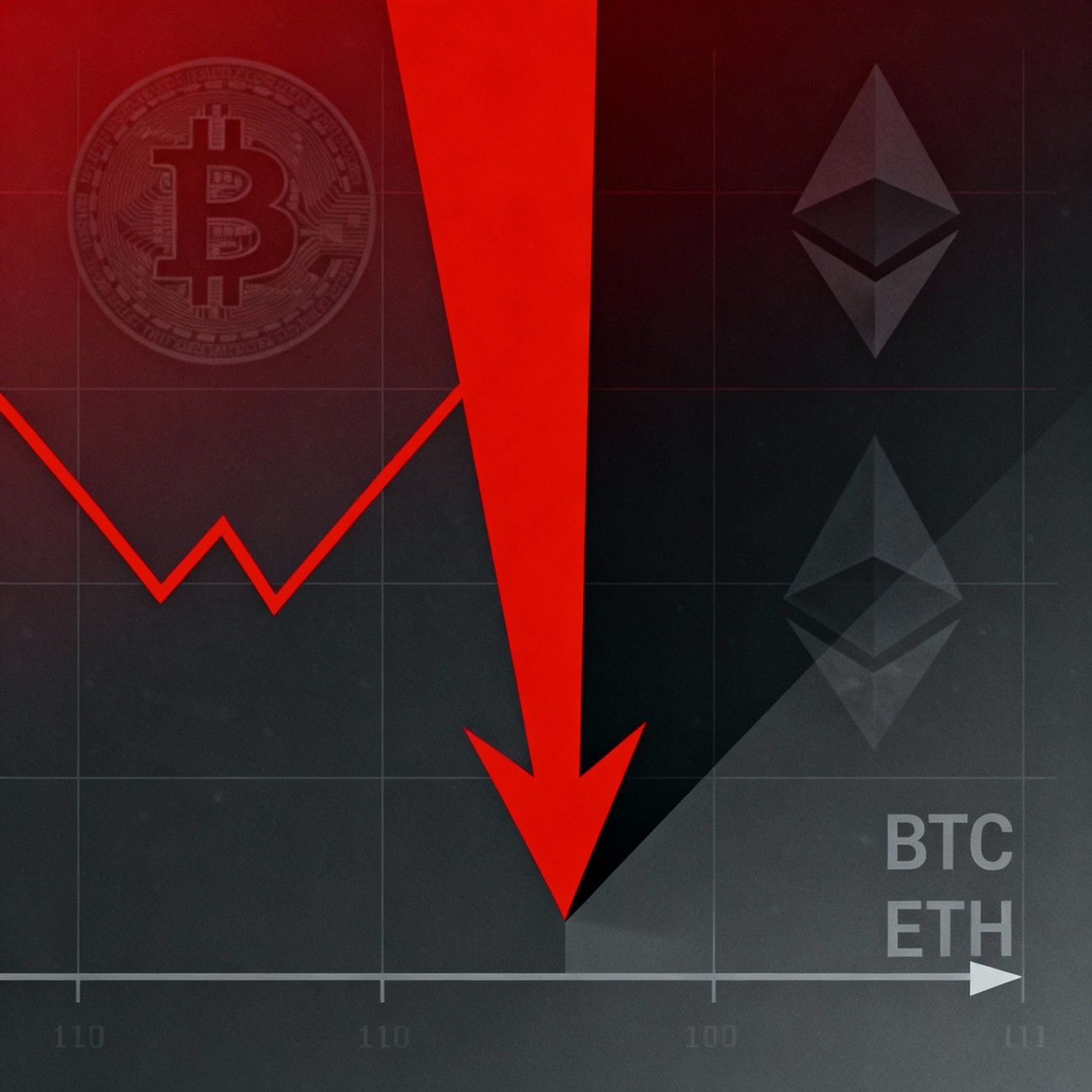Why Crypto Prices Collapsed After Trump’s Tariff Announcement
The crypto market crash in 2025 confirmed how touchy international virtual assets are to geopolitical shifts. While new trade price lists on Chinese era exports were introduced, market sentiment flipped immediately. Buyers rushed from virtual assets to more secure holdings. The phrase “crypto market crash” led every predominant economic headline as billions in price evaporated within hours.
Analysts across the U.S Europe, and Asia described the flow as one of the quickest selloffs of the year, driven through a combination of leverage, fear, and uncertainty. Virtual assets misplaced an estimated nineteen billion dollars in total market price in less than a day. Bitcoin slipped underneath key guide zones, whilst Ethereum dropped sharply, pulling the wider altcoin market down with it.
The 19 billion greenback loss pondered liquidations of leveraged positions across predominant exchanges. Thin weekend liquidity and algorithmic buying and selling brought to the panic, amplifying volatility beyond ordinary ranges.
Institutional buyers answered with disciplined threat control, getting into stablecoins and hedging exposure via futures contracts. Retail investors, alternatively reacted emotionally exiting positions and accelerating the decline.
Automated buying and selling structures detected the surge in promote orders, triggering even extra liquidations. The crypto market crash have become a clean lesson in how sentiment and leverage combine to create sharp fee collapses at some point of policy shocks.
Market Panic and Billions Wiped Out Overnight
The policy decision behind this turmoil concerned a one-hundred percent tariff on Chinese era exports. The degree protected key components used in blockchain hardware, semiconductors, and virtual payment infrastructure. For buyers, the declaration signaled a probable repeat of supply-chain disruptions.
Mining hardware manufacturers, data facilities, and fintech corporations confronted uncertainty approximately charges and distribution. That uncertainty pushed investors to promote before liquidity dried up.
Bitcoin noticed a 5 percent intraday decline. Ethereum followed closely behind, falling 4 percent. Smaller cash suffered double-digit losses as investors rotated into stablecoins. The result became a sequence response that spread across international exchanges. Asia led the selloff, followed through Europe and North America. Change data confirmed buying and selling volumes surged as market makers widened spreads to manage volatility.

Liquidity stress have become seen early in the Asian session, in which buying and selling volumes jumped to report highs. The volatility index for virtual assets reached its highest point given that 2024.
How Traders and Investors Reacted to the Crash
Analysts compared the event to a liquidity vacuum, in which speedy-moving markets exposed the interdependence among crypto charges and macroeconomic events. This link among geopolitical decisions and crypto valuations proved more potent than many buyers had expected.
Virtual assets have developed into macro-touchy devices. Geopolitical tension, mainly among the U.S. and China, at once influences threat urge for food across all asset lessons. The crypto market crash illustrated how decentralized assets nevertheless depend upon international monetary stability.
Investors no longer treat cryptocurrencies as remoted from relevant bank and trade policy decisions. As a substitute, they view them as excessive-beta assets reacting to international indicators. Investor sentiment plays a crucial function at some point of such shocks.
While tariff policies change, supply chains and era corporations face operational strain. This in turn influences sentiment across the crypto region, in which innovation and hardware availability are tightly related. Policy shifts, liquidity adjustments, and emotional reactions feed into one another, creating market instability.
How Tariffs Shook the Global Crypto Ecosystem
Impact of 100% Tariffs on Chinese Tech
While compared to previous corrections in 2021 and 2022, the 2025 crash confirmed higher leverage and faster contagion. Change data confirmed that margin positions were worn out at twice the fee of earlier downturns. This boom in leverage demonstrated how speculative buying and selling amplified every headline impact. The event reminded investors that threat control, no longer prediction, determines survival in risky markets.
Ripple Effects Across Bitcoin, Ethereum, and Altcoins
Predominant exchanges pronounced extra than 8 hundred million dollars in liquidations within twelve hours. Bitcoin futures led the decline as automated structures induced prevent losses. The pace of those wipeouts resembled flash crashes visible in conventional markets. Threat structures functioned as designed, however the value of leverage made the selloff unavoidable.
Global Liquidity and Market Volatility Trends
Hedge budget and professional market makers answered through tightening threat exposure. They reduced leverage, expanded collateral, and different into coins-subsidized stablecoins. Many widened spreads to shield liquidity positions. These threat-control measures constrained systemic fallout and helped prevent secondary crashes. The professional reaction confirmed how infrastructure has matured since the early days of virtual buying and selling.
Institutional and Retail Reactions
Exchange Liquidations and Leveraged Wipeouts
Retail investors, however, persevered intense losses. Many had entered the market near recent highs, looking ahead to endured rallies. Panic promoting ruled dialogue forums and social platforms. Analysts reading buying and selling psychology mentioned repeated emotional cycles of fear, capitulation, and regret. Retail buyers over again have become the largest contributors to short-time period volatility.
How Hedge Funds and Market Makers Managed Exposure
International regulators moved fast to calm markets. Organizations in the U.S., EU, and Asia issued statements reinforcing investor protection and transparency. They reminded the public that cryptocurrencies remain speculative and susceptible to excessive fluctuations. Clean conversation helped repair partial stability within days.
Retail Traders and Emotional Decision-Making
The event renewed requires higher reporting requirements. Analysts and policy businesses entreated exchanges to reveal actual-time leverage ratios, custody data, and liquidation mechanisms. Transparency ought to improve self assurance and restriction contagion at some point of sharp downturns. Regulators also mentioned coordinated policies among jurisdictions to prevent facts gaps.
Crypto Regulation and Market Stability 2025
How Regulators Responded to the Market Drop
The trade tensions behind the crash highlighted how interconnected policy, era, and finance have become. The U.S. and China’s monetary relationship at once inspired crypto market stability. EU regulators sought to mediate via coordinated frameworks emphasizing data protection and investor education. Such cooperation remains crucial for maintaining orderly markets in future shocks.
Calls for Transparency and Investor Protection
Market analysts assume sluggish healing as investors alter to the brand new tariff environment. Many see the 19 billion greenback decline as a recalibration in preference to a systemic crumble. Ancient data suggests that markets often stabilize after such corrections, paving the manner for renewed accumulation through lengthy-time period buyers.
Policy Coordination Between U.S., China, and EU
The event furnished training for each buyers and policymakers. For buyers, it proved that diversification, managed leverage, and disciplined prevent-loss techniques count number extra than hypothesis. For policymakers, it revealed that macroeconomic gear like price lists can ripple via virtual markets faster than expected, annoying coordination and foresight.
The Future of Digital Assets After the Crash
How the Market Could Recover in 2025
Institutional gamers began revising their international crypto techniques. Budget reviewed allocation fashions to reduce sensitivity to trade tensions. Exchanges started out designing contingency plans for policy-related volatility. Developers explored decentralized threat control gear to enhance resilience in future disruptions.
Lessons for Investors and Policymakers
In the U.S. and Europe, analysts considered the correction as a take a look at of system maturity. Whilst the short-time period surprise became intense, infrastructure overall performance remained strong. Exchanges processed report transaction volumes without halts. Institutional flows stabilized charges within 40-8 hours, suggesting deeper market liquidity than in earlier years.
Potential Shifts in Global Crypto Strategies
Asia performed a relevant function in healing. Buying and selling desks in Singapore, Japan, and South Korea pronounced renewed interest as arbitrage possibilities emerged. Market depth advanced as Asian liquidity vendors reentered the market. This local participation elevated stabilization and restored investor self assurance.
Global Perspectives on Crypto Volatility
U.S. and Europe’s Response to Market Decline
Institutional self assurance remained company no matter the surprise. Asset managers considered the 19 billion greenback loss as small compared to total crypto capitalization. Many endured to treat virtual assets as lengthy-time period exposure to innovation in preference to short-time period hypothesis.
Asia’s Strategic Role in the Crypto Recovery
Analysts argued that as institutional participation grows, crypto markets may additionally finally display extra resilience to geopolitical threat. After the crash, smart money began reallocating capital. Task corporations focused blockchain infrastructure and regulated payment structures, thinking about them extra solid than speculative tokens.
Institutional Confidence and Future Projections
Lengthy-time period buyers used the fee dip to construct positions in super assets. Lower valuations created new entry factors for people with patient techniques. Portfolio managers cautioned that disciplined accumulation at some point of downturns historically can provide strong overall performance.
Investment Opportunities and Market Reset
Where Smart Money is Moving After the Crash
Greenback-cost averaging and selective exposure have become commonplace strategies. Analysts recommended, however, that macroeconomic and political dangers remain sizable. Supply-chain demanding situations, interest fee adjustments, and further trade disputes ought to spark new volatility episodes.
New Entry Points for Long-Term Investors
Whilst immediately healing seems slow, the wider trend shows ongoing market maturation. Every correction brings more potent infrastructure, higher regulation, and extra sophisticated threat gear.
Strategic Risks and Potential Rebounds
The crypto market maintains to adapt alongside conventional finance, reflecting international sentiment in actual time. The 2025 crypto market crash stands as any other bankruptcy in the tale of virtual finance’s integration with the global economy.
Final Thoughts: Crypto Market Crash 2025 and What Comes Next
It reinforced the idea that policy and markets are inseparable. For investors, establishments, and regulators alike, the event served as a reminder that vigilance and adaptableness define lengthy-time period success in risky markets. Educational purposes simplest, no longer economic advice.
